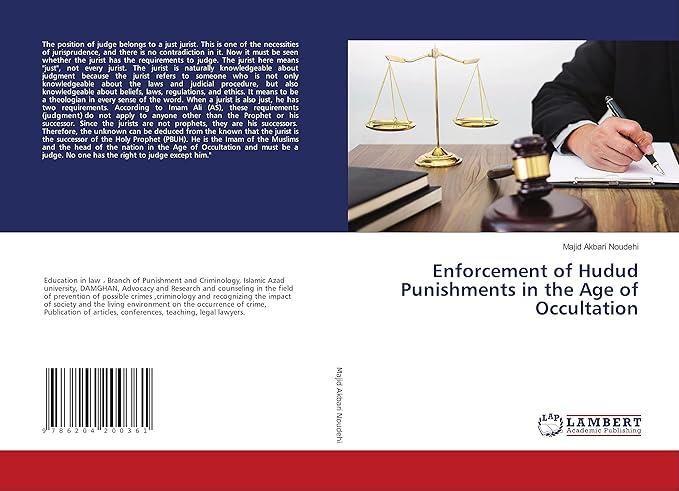کتاب Mindfulness in Maulana’s School
۴۱۸,۵۰۰ تومان قیمت اصلی: ۴۱۸,۵۰۰ تومان بود.۱۸۱,۳۵۰ تومانقیمت فعلی: ۱۸۱,۳۵۰ تومان.
| تعداد صفحات | 82 |
|---|---|
| شابک | 978-620-7-46328-2 |
| انتشارات |

کتاب “Mindfulness in Maulana’s School”
درباره کتاب
کتاب “Mindfulness in Maulana’s School” یک اثر منحصر بهفرد است که به بررسی ارتباط مفاهیم ذهنآگاهی (Mindfulness) با آموزههای مولانا جلالالدین بلخی، یکی از بزرگترین شاعران و عرفای تاریخ اسلام، میپردازد. نویسنده این کتاب با استفاده از آثار مولانا، به تحلیل روشهای عملی و فلسفی توجه به لحظه حاضر و اهمیت تمرکز در زندگی روزمره پرداخته است.
این کتاب به دنبال بررسی تأثیرات آموزههای مولانا بر ذهنآگاهی و همچنین کاربرد این آموزهها در زندگی مدرن است. با استفاده از اشعار، حکایات و تمثیلهای مولانا، نویسنده قصد دارد به خوانندگان کمک کند تا بتوانند مفاهیم پیچیده ذهنآگاهی را در چارچوب مفاهیم عرفانی و فلسفی مولانا درک کنند.
موضوعات کلیدی کتاب
- ذهنآگاهی (Mindfulness): مفهوم و کاربرد آن در زندگی روزمره و ارتباط آن با فلسفه و عرفان مولانا.
- آموزههای مولانا: تحلیل و بررسی آموزههای مولانا در زمینه توجه به لحظه حاضر، عشق و حضور در اکنون.
- تعامل فلسفه و روانشناسی: مقایسه و تطبیق مفاهیم عرفانی مولانا با مباحث روانشناسی مدرن و نظریههای ذهنآگاهی.
- آثار مولانا: استفاده از اشعار و حکایات مولانا به عنوان منابعی برای توضیح و تبیین مفاهیم ذهنآگاهی.
ویژگیهای کتاب
- ترکیب فلسفه و روانشناسی: این کتاب بهطور مؤثر بین مفاهیم عرفانی مولانا و علم روانشناسی مدرن پلی برقرار میکند و ارتباط عمیق بین این دو را آشکار میسازد.
- مطالب عملی و کاربردی: علاوه بر تحلیلهای نظری، کتاب شامل تمرینها و روشهای عملی است که به خوانندگان کمک میکند تا مفهوم ذهنآگاهی را در زندگی روزمره خود پیادهسازی کنند.
- آثار مولانا: بهرهگیری از اشعار مولانا و تحلیل عمیق آنها در زمینه ذهنآگاهی و حضور در لحظه.
چرا این کتاب را بخوانید؟
این کتاب به شما کمک میکند تا نهتنها با مفهوم ذهنآگاهی آشنا شوید، بلکه بتوانید آن را در زندگی روزمرهتان پیادهسازی کنید. اگر به فلسفه، عرفان اسلامی یا روانشناسی علاقهمند هستید، این کتاب برای شما ایدهآل است. همچنین برای کسانی که میخواهند ارتباط معنوی و فکری بین آموزههای عرفانی مولانا و مفاهیم روانشناسی مدرن را درک کنند، این کتاب گزینهای مناسب است.
مخاطب هدف
این کتاب برای افرادی که علاقهمند به فلسفه، روانشناسی، عرفان اسلامی و آموزههای مولانا هستند، بسیار مفید خواهد بود. همچنین کسانی که به دنبال روشی برای بهبود ذهنآگاهی و تمرکز در زندگی خود هستند، میتوانند از مطالب کتاب بهرهمند شوند.
سفارش کتاب
اگر به دنبال یک کتاب با محتوای فلسفی و روانشناختی هستید که ارتباطی عمیق با آموزههای مولانا داشته باشد، “Mindfulness in Maulana’s School” گزینهای بینظیر برای شما خواهد بود. برای خرید و دریافت نسخههای مختلف کتاب، لطفاً با ما تماس بگیرید.
📘 پرسش و پاسخ درباره کتاب Mindfulness in Maulana’s School
🔹 فصل 1: معرفی و آشنایی با ذهنآگاهی (Mindfulness)
❓ ۱. ذهنآگاهی چیست؟
🔹 ذهنآگاهی به معنی توجه آگاهانه و بدون قضاوت به لحظهحال است. این توانایی به فرد کمک میکند تا از افکار و احساسات خود آگاه شده و در حال حاضر زندگی کند.
❓ ۲. تاریخچه ذهنآگاهی چگونه است؟
🔹 تاریخچه ذهنآگاهی به تاریخ کهن هند و بودیسم برمیگردد، اما در سالهای اخیر توسط محققانی چون جان کابات-زین در غرب مورد توجه قرار گرفت.
❓ ۳. مبنای زیستشناختی ذهنآگاهی چیست؟
🔹 تحقیقات نشان داده است که ذهنآگاهی باعث تغییرات مثبت در فعالیتهای مغزی میشود، به ویژه در مناطقی که مربوط به توجه، احساسات و تصمیمگیری است.
❓ ۴. اجزای اصلی ذهنآگاهی کدامند؟
🔹 سه عنصر اصلی ذهنآگاهی عبارتند از: توجه آگاهانه، پذیرش و خودآگاهی.
🔹 فصل 2: ذهنآگاهی در آثار مولانا
❓ ۵. مولانا چگونه در اشعار خود به ذهنآگاهی اشاره کرده است؟
🔹 مولانا در اشعار خود مفاهیمی مانند آگاهی از لحظه، حضور در حال، و پذیرش بیقید و شرط را به کار برده است که نشاندهنده آگاهی ذهنی است.
❓ ۶. استعارههای مرتبط با ذهنآگاهی در اشعار مولانا چیست؟
🔹 مولانا از استعارههایی مانند «دریا»، «چراغ»، «آینه» برای نشان دادن آگاهی درونی و حضور ذهن در لحظه استفاده کرده است.
❓ ۷. اجزای ذهنآگاهی در مثنوی معنوی مولانا چیست؟
🔹 در مثنوی معنوی، مولانا به مفاهیمی چون مراقبه در لحظه حال، تمرکز بر درون و آزادسازی از وابستگیهای ذهنی میپردازد که تماماً با اصول ذهنآگاهی هماهنگ است.
🔹 فصل 3: نتیجهگیری
❓ ۸. نتایج کلی در مورد ارتباط بین ذهنآگاهی و آثار مولانا چیست؟
🔹 کتاب نشان میدهد که مولانا با استفاده از مفاهیم فلسفی و روحانی، اصول ذهنآگاهی را به شیوهای نمادین و عمیق در اشعار خود بیان کرده است، که میتواند برای راهنمایی در زندگی مدرن مفید باشد.
❓ ۹. چگونه میتوان از آموزههای مولانا برای تقویت ذهنآگاهی استفاده کرد؟
🔹 از آموزههای مولانا میتوان برای تمرکز بر لحظهحال، پذیرش و عدم قضاوت استفاده کرد. روشهایی که او در اشعارش بیان میکند میتواند به فرد در رسیدن به آرامش و آگاهی بیشتر کمک کند.
📌 نکات کلیدی:
- ذهنآگاهی به معنای توجه به حال و پذیرش آن است.
- مولانا در اشعار خود به اصولی اشاره کرده است که با مفاهیم ذهنآگاهی همراستا هستند.
- استفاده از آموزههای مولانا میتواند به تقویت توجه و آگاهی فردی در زندگی روزمره کمک کند.
این پرسشها و پاسخها میتواند در درک بهتر کتاب Mindfulness in Maulana’s School کمککننده باشد. 😊
| تعداد صفحات | 82 |
|---|---|
| شابک | 978-620-7-46328-2 |
| انتشارات |
محصولات مشابه
-
کتاب The realization of national spatial data infrastructure (NSDI)
۴۰۰,۵۰۰ تومانقیمت اصلی: ۴۰۰,۵۰۰ تومان بود.۱۷۳,۵۵۰ تومانقیمت فعلی: ۱۷۳,۵۵۰ تومان. -
کتاب Enforcement of Hudud Punishments in the Age of Occultation
۵۹۸,۵۰۰ تومانقیمت اصلی: ۵۹۸,۵۰۰ تومان بود.۱۹۹,۵۰۰ تومانقیمت فعلی: ۱۹۹,۵۰۰ تومان. -
کتاب Determination of Changing Expression of miR-212 and EGFR Genes
۳۷۸,۰۰۰ تومانقیمت اصلی: ۳۷۸,۰۰۰ تومان بود.۱۶۳,۸۰۰ تومانقیمت فعلی: ۱۶۳,۸۰۰ تومان. -
کتاب FEAR AND DESIRE
۳۱۵,۰۰۰ تومانقیمت اصلی: ۳۱۵,۰۰۰ تومان بود.۱۵۷,۵۰۰ تومانقیمت فعلی: ۱۵۷,۵۰۰ تومان.












